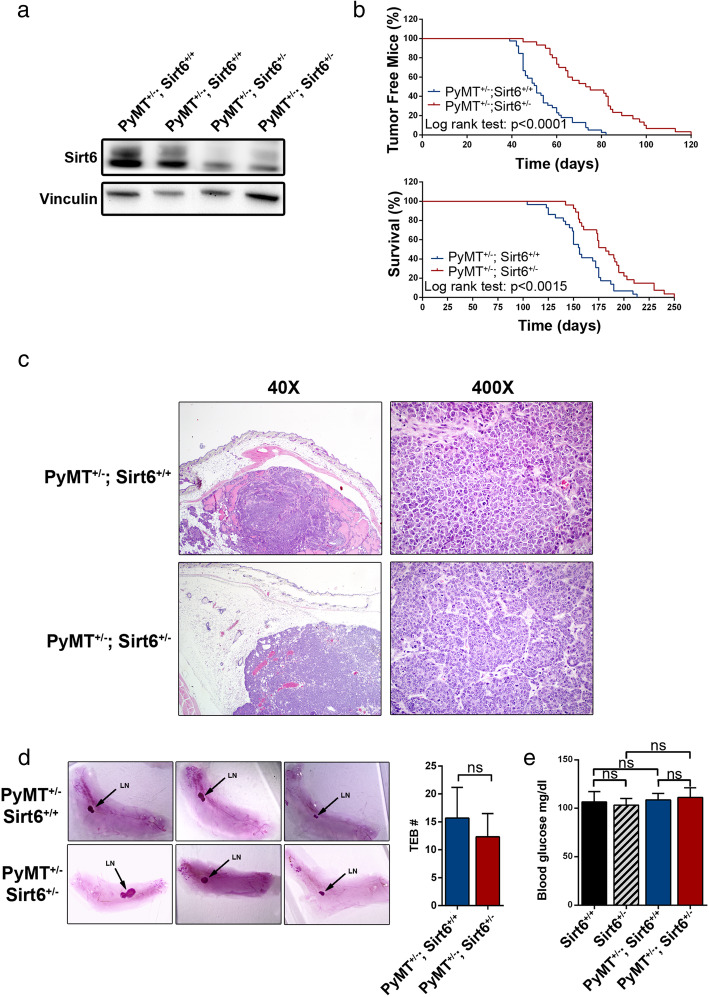Fig. 1.
Sirt6 heterozygous deletion increases tumor latency and enhances survival in the MMTV-PyMT mammary tumor model. a Tumor masses were excised from MMTV-PyMT+/−; Sirt6+/+ and MMTV-PyMT+/−; Sirt6+/− mice; protein lysates were generated, and Sirt6 and vinculin levels were detected by Western blot. b Tumor latency (upper panel) and overall survival (lower panel) of MMTV-PyMT+/−; Sirt6+/+ (n = 39) and of MMTV-PyMT+/−; Sirt6+/− (n = 30) mice were monitored over time. c Histopathological analysis of the mammary glands from MMTV-PyMT+/−; Sirt6+/+ and MMTV-PyMT+/−; Sirt6+/− mice (hematoxylin-eosin; × 40 and × 400) shows poorly differentiated (G3) murine ductal carcinoma of the breast consisting in dysmetrical elements with solid growth, brisk mitotic activity, and scattered areas of necrosis in both types of tumor. d Mammary glands from 4-week-old MMTV-PyMT+/−; Sirt6+/+ (n = 3) and MMTV-PyMT+/−; Sirt6+/− (n = 3) mice were stained by carmine alum (left) and used to quantify the TEB (right). LN, lymph node. Data are presented as mean ± SD; ns, not statistically significant. e Blood glucose levels in Sirt6+/+ (n = 6), Sirt6+/− (n = 3), MMTV-PyMT+/−; Sirt6+/+ (n = 3), and MMTV-PyMT+/−; Sirt6+/− (n = 6) mice. Data are presented as mean ± SD. ns, not statistically significant

